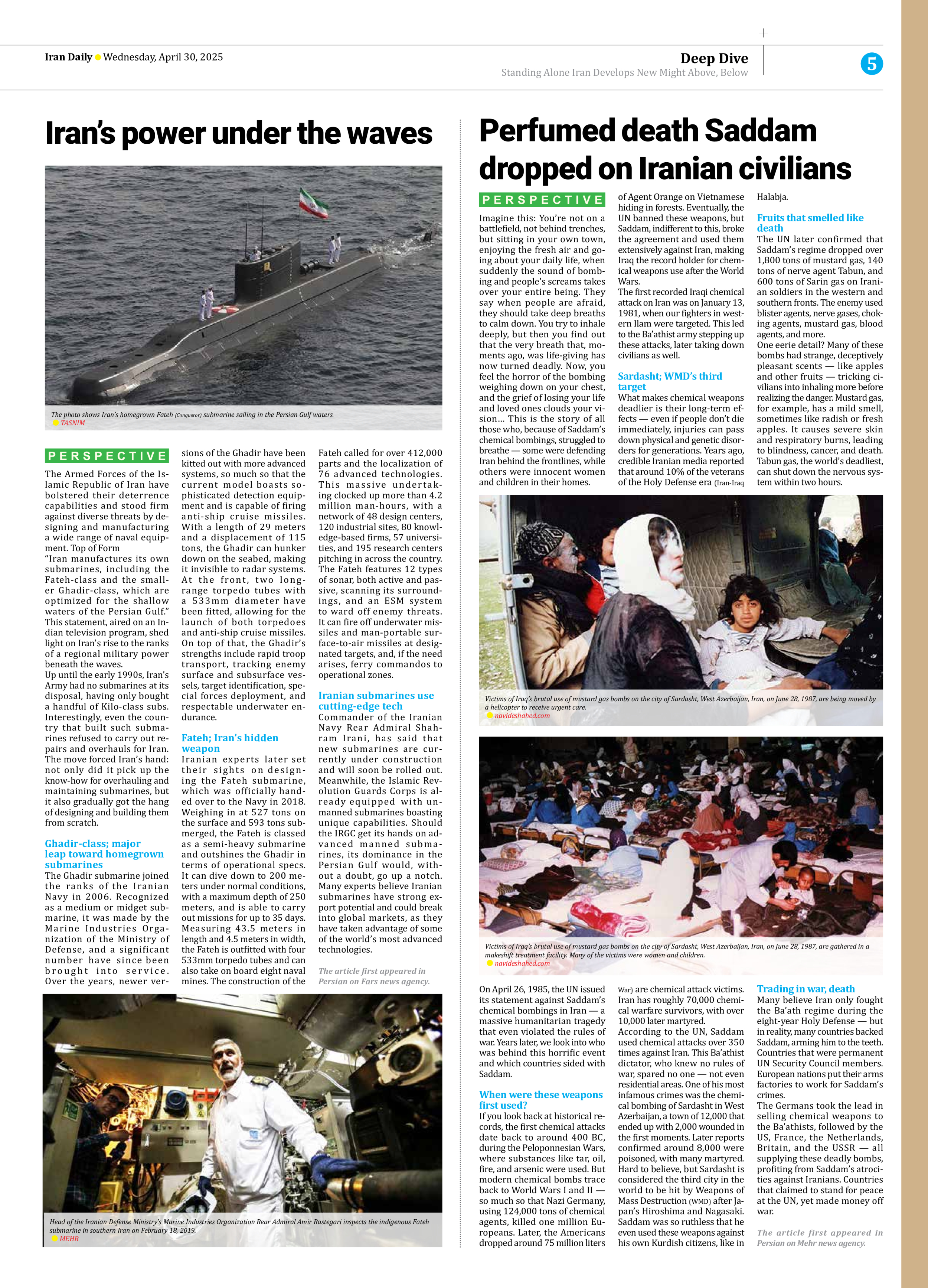
Iran’s power under the waves
The Armed Forces of the Islamic Republic of Iran have bolstered their deterrence capabilities and stood firm against diverse threats by designing and manufacturing a wide range of naval equipment. Top of Form
“Iran manufactures its own submarines, including the Fateh-class and the smaller Ghadir-class, which are optimized for the shallow waters of the Persian Gulf.”
This statement, aired on an Indian television program, shed light on Iran’s rise to the ranks of a regional military power beneath the waves.
Up until the early 1990s, Iran’s Army had no submarines at its disposal, having only bought a handful of Kilo-class subs. Interestingly, even the country that built such submarines refused to carry out repairs and overhauls for Iran.
The move forced Iran’s hand: not only did it pick up the know-how for overhauling and maintaining submarines, but it also gradually got the hang of designing and building them from scratch.
Ghadir-class; major leap toward homegrown submarines
The Ghadir submarine joined the ranks of the Iranian Navy in 2006. Recognized as a medium or midget submarine, it was made by the Marine Industries Organization of the Ministry of Defense, and a significant number have since been brought into service.
Over the years, newer versions of the Ghadir have been kitted out with more advanced systems, so much so that the current model boasts sophisticated detection equipment and is capable of firing anti-ship cruise missiles.
With a length of 29 meters and a displacement of 115 tons, the Ghadir can hunker down on the seabed, making it invisible to radar systems.
At the front, two long-range torpedo tubes with a 533mm diameter have been fitted, allowing for the launch of both torpedoes and anti-ship cruise missiles.
On top of that, the Ghadir’s strengths include rapid troop transport, tracking enemy surface and subsurface vessels, target identification, special forces deployment, and respectable underwater endurance.
Fateh; Iran’s hidden weapon
Iranian experts later set their sights on designing the Fateh submarine, which was officially handed over to the Navy in 2018.
Weighing in at 527 tons on the surface and 593 tons submerged, the Fateh is classed as a semi-heavy submarine and outshines the Ghadir in terms of operational specs. It can dive down to 200 meters under normal conditions, with a maximum depth of 250 meters, and is able to carry out missions for up to 35 days.
Measuring 43.5 meters in length and 4.5 meters in width, the Fateh is outfitted with four 533mm torpedo tubes and can also take on board eight naval mines. The construction of the Fateh called for over 412,000 parts and the localization of 76 advanced technologies.
This massive undertaking clocked up more than 4.2 million man-hours, with a network of 48 design centers, 120 industrial sites, 80 knowledge-based firms, 57 universities, and 195 research centers pitching in across the country.
The Fateh features 12 types of sonar, both active and passive, scanning its surroundings, and an ESM system to ward off enemy threats.
It can fire off underwater missiles and man-portable surface-to-air missiles at designated targets, and, if the need arises, ferry commandos to operational zones.
Iranian submarines use cutting-edge tech
Commander of the Iranian Navy Rear Admiral Shahram Irani, has said that new submarines are currently under construction and will soon be rolled out.
Meanwhile, the Islamic Revolution Guards Corps is already equipped with unmanned submarines boasting unique capabilities. Should the IRGC get its hands on advanced manned submarines, its dominance in the Persian Gulf would, without a doubt, go up a notch.
Many experts believe Iranian submarines have strong export potential and could break into global markets, as they have taken advantage of some of the world’s most advanced technologies.
The article first appeared in
Persian on Fars news agency.







